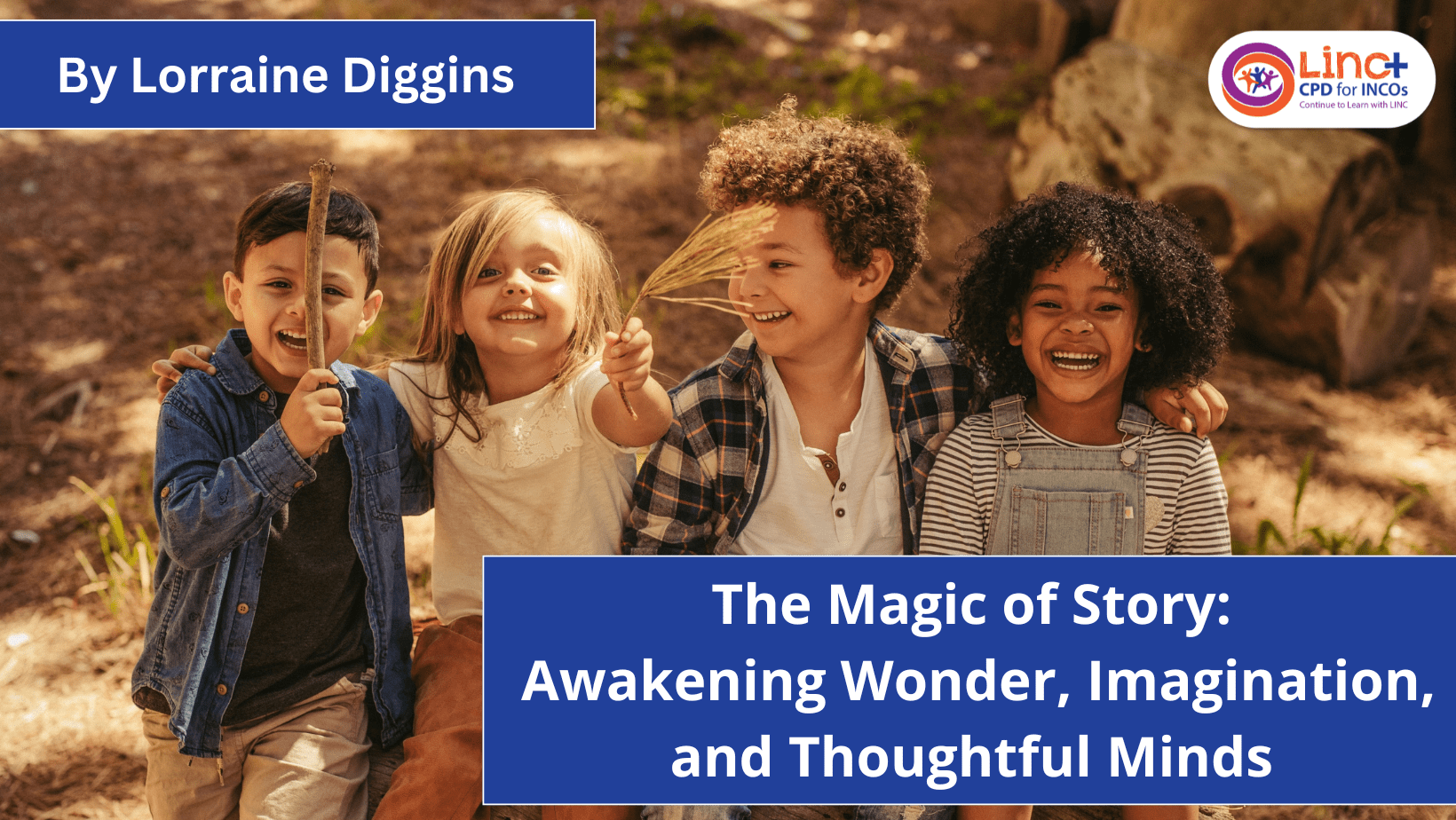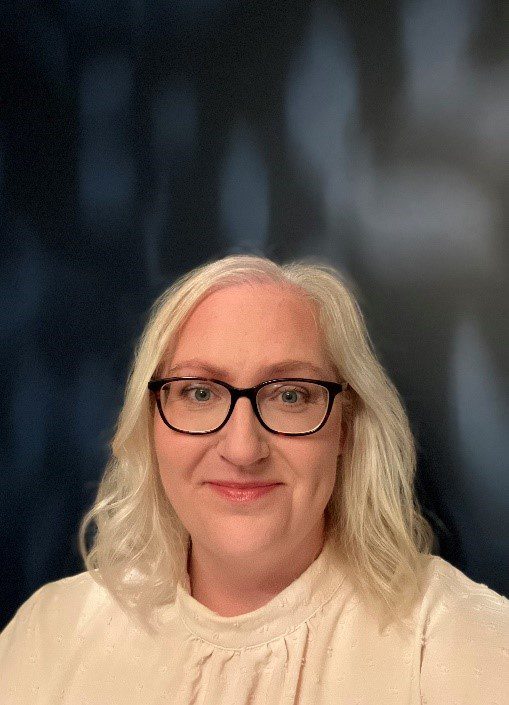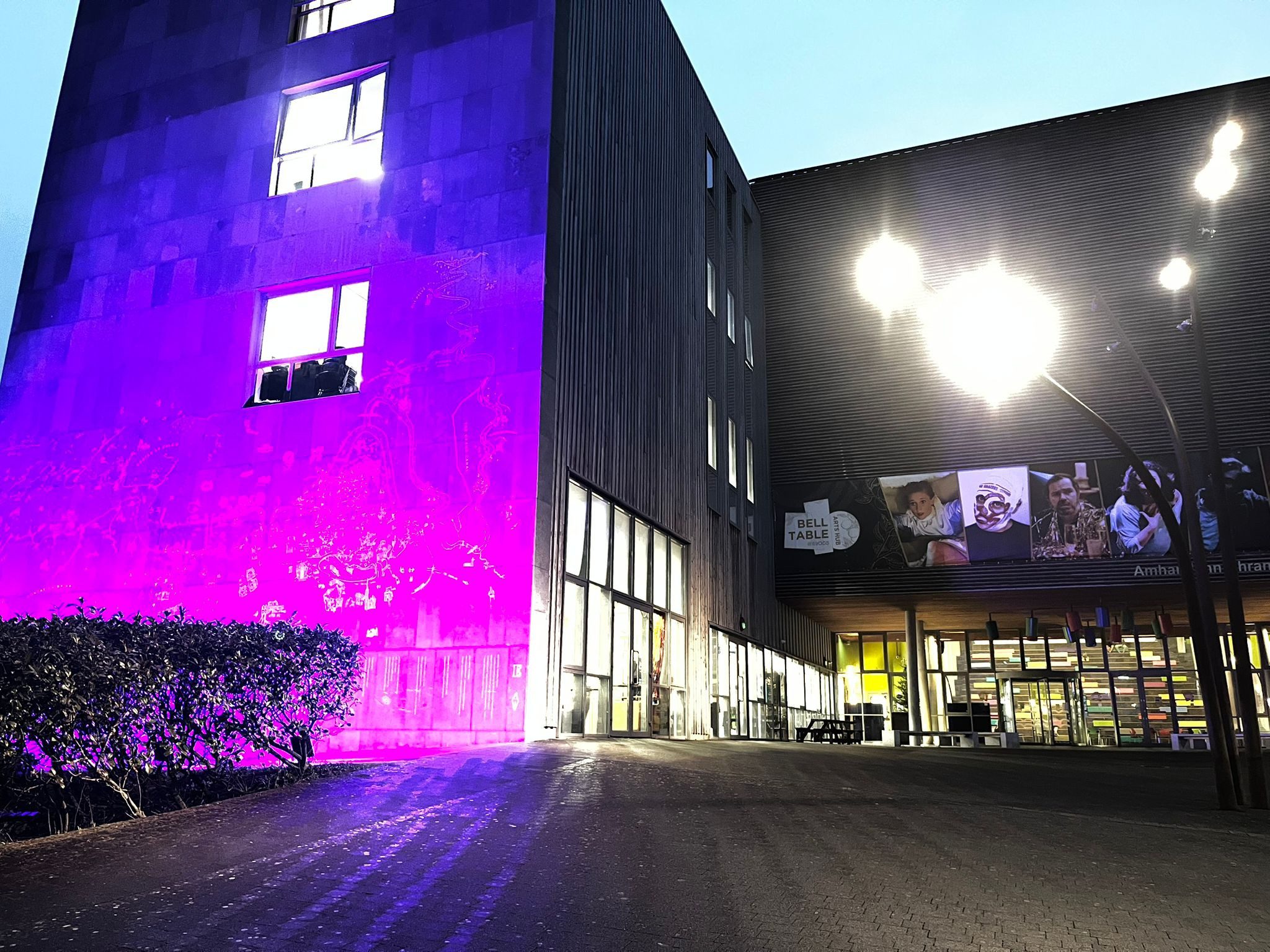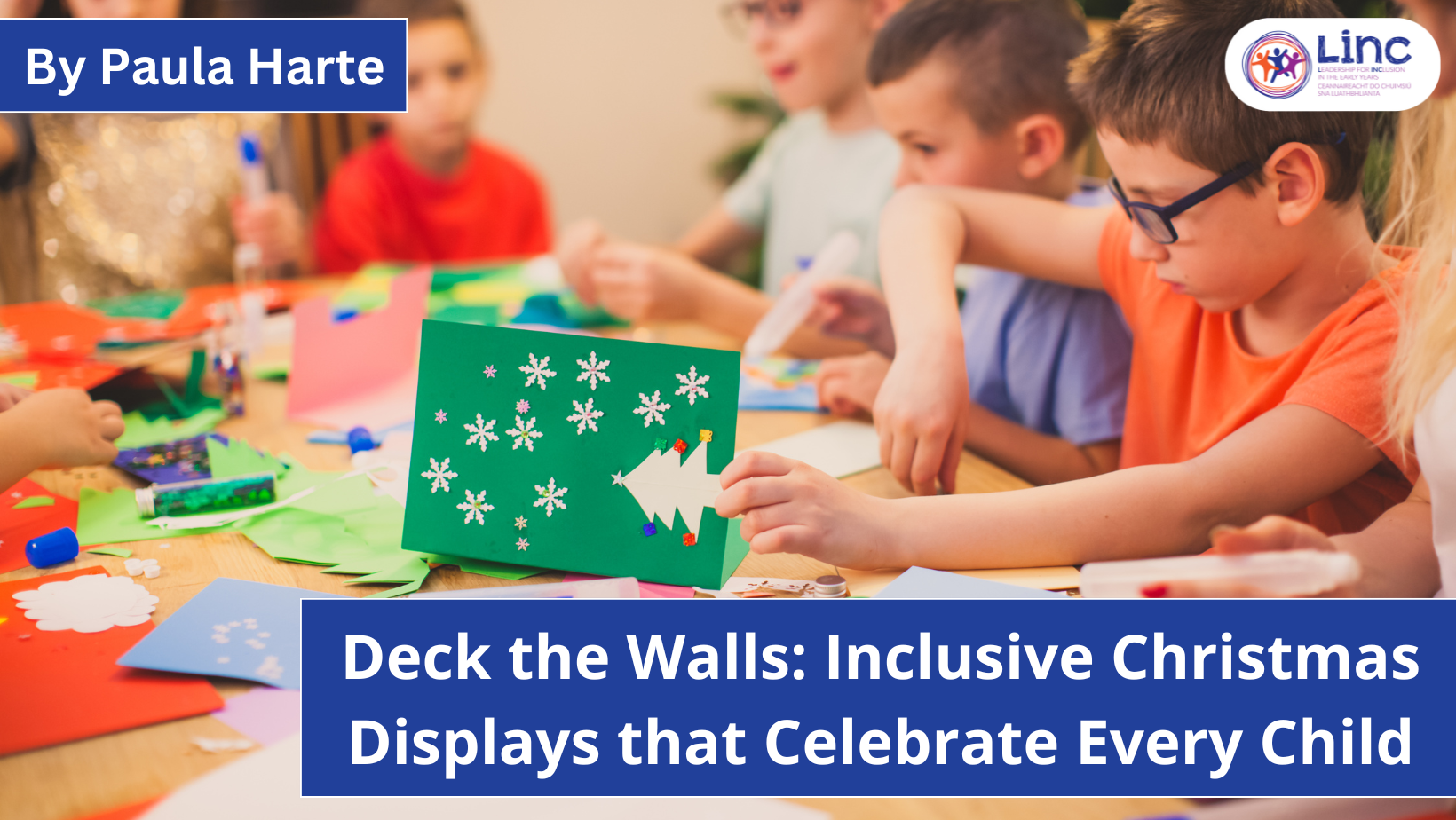The Magic of Story:
Awakening Wonder, Imagination, and Thoughtful Minds
In this edition of the LINC Blog, Lorraine Diggins, LINC+ CPD Programme Tutor, invites us into the magical world of storytelling in early years education. Reflecting on her experience as a Forest School teacher, Lorraine explores how storytelling in nature can awaken wonder, spark imagination and nurture critical thinking in young children. More than just tales, stories become a gateway to curiosity, connection and courageous conversations about the world around us. From tiny grass stitchers to rainbow-teared clouds, Lorraine reminds us that stories are not just about what is. They are about what could be.

In a clearing beneath the whispering trees, children gather. The air smells like damp earth and woodsmoke. A hush falls, not because they’ve been asked, but because something is about to begin — a story. In that moment, the world tilts slightly, and suddenly grass isn’t just green; it’s been sewn in place by a worm with a tiny needle and thread. The leaves don’t just turn gold because of the seasons — there’s a fairy hiding among the branches, her paintbrush dipped in autumn.
As a Forest School teacher, I’ve watched the transformative power of storytelling in the wildest of classrooms. Surrounded by nature, the telling of tales became our way of explaining the world. Yes, we could talk about the photosynthesis cycle or how chlorophyll breaks down in the fall — but where’s the wonder in that for our young children? Isn’t it just a little more magical to believe that the forest itself is alive with characters, each with their own job, each with their own tale?
On this misty morning, I remember sitting in a circle with a group of children beneath an old oak tree. The ground was soft with dew, and everything felt hushed and expectant. One little one asked why the grass seemed to grow so neatly in lines after we’d cleared a space for our play. I could’ve explained root systems or sunlight patterns — but instead, I said, “Well, have you heard about the Grass Stitcher?”
Their eyes widened and my voice whispered “She’s a tiny creature, no taller than your finger, with a silver thimble on her thumb and a spool of emerald green thread on her back. Every night, when no one’s watching, she stitches the grass back into place so it can grow straight and strong.”
And just like that — we were in. The grass became a canvas, and every patch of moss a mystery. The children weren’t just observing nature anymore — they were part of it. Imagining it. Asking questions. (A million questions) Building whole worlds of their own.
This isn’t just whimsy. It’s essential. Story awakens awe — that wide-eyed, breath-held, jaw-dropped awe — the kind that makes the world shimmer a little. And from awe, something powerful grows: imagination.
Imagination is not fluff. It is the root of everything innovative and brave. Every engineer, architect, surgeon, artist — they all started by thinking what if…? or I wonder how…? These questions are the bedrock of invention. Imaginative thinking opens doors that don’t yet exist. It doesn’t just lead to creativity, but to critical thinking — the ability to explore, to reflect, to challenge.
In a world where misinformation streams directly into the palms of our children’s hands, our job is not only to educate them but to empower them to question. From the moment they ask why the sky is blue or why birds can fly, we have the opportunity to do more than give them facts. We can give them curiosity. We can say, “Well, what do you think?” and listen. We can encourage wild answers and bold guesses, knowing that each one is a stepping stone on the path toward understanding.
That’s the secret of storytime: it’s not just about passively listening to a tall tale. It’s the beginning of inquiry. It’s philosophy in disguise. Those giggling, wide-eyed children at your feet — they are the philosophers of tomorrow. The ones who will one day ask not just why the leaves change, but why justice matters, or how we might live more kindly in the world.
When we tell stories, we gift children the space to imagine, to question, and to feel that their voice has a place in the conversation. We show them that the world is not fixed, that it’s open to interpretation, wonder, and reinvention. Story gives children the space to imagine, to question, to dream, and to understand that their voice matters. That the world is not set in stone. That it can be shaped — by thoughts, by kindness, by creativity, by courage.
So yes, let’s keep reading the science books and teaching them how the world works — but let’s also tell them about the mouse who rides on the owl’s back, or the cloud who cried rainbow tears. Let’s let them live in a world where magic is real — because in many ways, it is.
Because imagination is the seed from which all understanding grows.
And in doing so, we will raise children who not only understand their world — but feel wonder within it, and have the courage to change it. We raise not just learners — but thinkers. Dreamers. Change-makers.
Aistear (2024) Theme of Wellbeing, Aim 3 Babies, toddlers and young children will be creative, spiritual and compassionate.
Through nurturing relationships within a supportive environment, babies, toddlers and young children will:
“Be cineálta (kind) and fiosrach (curious), deep thinkers and reflective learners.”
“Enhance their spirituality through nurturing their sense of ionadh (wonder), awe, stillness and gratitude and through respecting ethnicity, culture, traditions, festivals, rituals and dúlra (nature)”



Lorraine Diggins
LINC+ CPD Tutor
Lorraine is the current acting LINC+ CPD Programme tutor. Lorraine graduated with a BA in Early Childhood Care and Education from Mary Immaculate College gaining the College Gold Medal. She has since gained a Master’s in Education in Adult and Further Education and was recently awarded the Doctoral Research Scholarship in Professional Learning. Her research is focusing on the development of Communities of Practice in Early Childhood Education.
Over the years, Lorraine has built a portfolio of CPD courses such as Universal Design for Learning digital Badge, E-moderating digital badge and is on secondment with the LCETB to develop Blended Learning courses. Lorraine has also tutored on QQI Level 5 & 6 Special Needs Assisting and Early Learning and Care courses. Before joining the LINC Team Lorraine worked as an Early Years Educator in various settings and had the wonderful experience of leading a team in an outdoor preschool with a nature-based pedagogy. Lorraine has a keen interest in inclusive education, communities of practice, continuous professional development and mentoring.
You may also like:

LINC Shines a Light on Inclusion for the International Day of Persons with Disabilities 2025
LINC Shines a Light on Inclusion for the International Day of Persons with Disabilities 2025 The Leadership for INClusion in the Early Years (LINC) Programme marked the United Nations International Day of Persons with Disabilities (IDPD) this evening by illuminating...

Creating a Sensory Space
Creating a Sensory Space In this edition of the LINC blog, Claire Butterly, Karina Abbott, Ann Donnellan, Carole Dee, Linda Madden, Margaret Joyce and Paula Harte highlight some considerations when planning a sensory space in your Early Learning and Care setting....

Deck the Walls: Inclusive Christmas Displays that Celebrate Every Child
Deck the Walls: Inclusive Christmas Displays that Celebrate Every Child In this edition of the LINC Blog, former LINC Tutor Paula Harte explores how Christmas displays can bring warmth, creativity, and connection to Early Learning and Care (ELC) and School-Aged...
